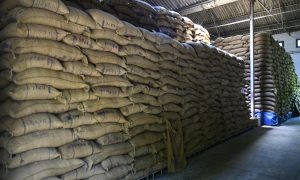Chinese scientists’ gene discovery paves way for machine hybrid rice seed production

Chinese scientists have made a breakthrough in rice breeding, identifying the GSE3 gene for fully mechanised hybrid seed production. By crossbreeding varieties like Tianyouhuazhan and Xiaoligeng, they created a male sterile line, XQA, and a restorer line, DHZ, yielding smaller hybrid seeds separable by sieve. This innovation promises to streamline production, overcoming labor-intensive methods and potentially boosting seed yield by 21 to 38 percent. The study, published in Nature Plants, marks a significant step towards enhancing global food security through advanced agricultural practices.
Chinese scientists have identified a gene that could enable the fully mechanised production of hybrid rice seeds, bypassing current time and labour-intensive manual methods that limit breeding efforts.
By creating rice lines with both smaller and larger grain sizes, the researchers found it then became a simple matter of mechanically separating the hybrid seeds from the rest using a sieve.
“Hybrid rice has achieved high grain yield and greatly contributes to food security, but the manual-labour-intensive hybrid seed production process limits fully mechanised hybrid rice breeding,” the team from the Chinese Academy of Science, Hainan Seed Industry Laboratory and China National Rice Research Institute, wrote in a paper published in the peer-reviewed journal Nature Plants on June 3.
“For next-generation hybrid seed production, the use of small-grain male sterile lines to mechanically separate small hybrid seeds from mixed harvest is promising,” they said.
The challenge was finding a gene that could enable a rice line to have a small grain size without reducing the seed number and yield.
However, the team discovered this was possible with the “ideal grain-size gene” GSE3. Field tests showed that rice lines with the gene did not negatively impact hybrid seed numbers; in fact, it led to a 21 to 38 per cent increase.
China pioneered hybrid rice, where rice is bred from two genetically different parents, and results in significantly higher rice yields. The first high-yield commercial strains were created in China and the country is now the world’s largest producer and consumer of hybrid rice.
“Rice yield has increased by 20 to 30 per cent due to the use of hybrid rice in the past few decades, thereby contributing greatly to food security,” the team said.
Hybrid rice is the first generation offspring of a rice plant that is fertilised by the pollen of a genetically different rice plant, achieved by pollinating a sterile male line with a self-pollinating restorer line.
“The restorer line needs to be grown near the male sterile line in separate rows to provide enough pollen for hybridisation. To avoid seed contamination, manual labour is used to remove the restorer line before harvesting hybrid seeds,” leading to over 150,000 tonnes of seed being wasted in China each year, the team wrote.
The ideal approach to this would be to plant a mix of the sterile and restorer lines and harvest all the seeds together, before mechanically separating hybrid seeds from the restorer seeds.
Methods to do this have been proposed – such as sorting by colour – but they have “inherent shortcomings,” the researchers said.
It has been proposed that making the male sterile line smaller, which would create smaller hybrid seeds, and making the restorer line bigger would allow for mechanical separation using a “simple sifter,” the team said.
The team crossed the Tianyouhuazhan (TYHZ) “super-hybrid rice” variety with a range of others. They found that crossing it with the small-grain Xiaoligeng variety created a smaller male sterile line, which they later identified was due to the GSE3 gene.
The team’s new male sterile line, called Xiaoqiao A (XQA), was bred with a large grain-size restorer line that they previously created called Da huazhan (DHZ). The first generation hybrid seeds produced from this cross were smaller, which allowed for them to be mechanically separated from the larger seeds produced by the self-pollination of the restorer line.
They found that at a sieve aperture width of under 2.08mm (0.08 inch), the purity of hybrid seeds sifted by their grain thickness was around 96 per cent, meeting standards for commercial production. In comparison, traditional separation methods have a purity of 96 to 98 per cent, according to the paper.
While the hybrid seed yield was lower, the team found that the seed number per plot was higher using the XQA and DHZ lines, which is important as this “is a determinant of commercial hybrid seed production”.
“These field trials thus reveal that the ideal male sterile line (XQA) and the restorer line (DHZ) allow for fully mechanised hybrid rice breeding,” the team wrote.
But creating rice lines with the GSE3 gene still presents a challenge, as conventional breeding approaches are also time and labour intensive. To get around this, the team “developed a one-step method to generate the loss-of-function mutants of GSE3” using the well-known gene-editing tool CRISPR-Cas9.
Beyond rice, the researchers said that GSE3 could also potentially be used in other crops to improve male sterile lines for mechanised hybrid seed production.















